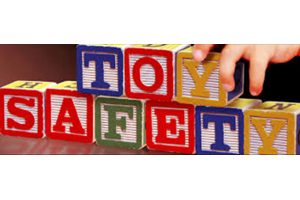
CPSIA New Standards For Toy Safety. Although the recently passed Consumer Product Safety Improvement Act includes strict new standards protecting children from dangerous toys and other products, many are concerned about toys being made now in accordance with less strict current standards. This issue was the focus of a recent dispute between Democratic Illinois Representative Jan […]

CPSIA New Standards For Toy Safety. Although the recently passed Consumer Product Safety Improvement Act includes strict new standards protecting children from dangerous toys and other products, many are concerned about toys being made now in accordance with less strict current standards. This issue was the focus of a recent dispute between Democratic Illinois Representative Jan Schakowsky—one of the bill’s authors—and U.S. Consumer Product Safety Commission (CPSC) staff. In a letter addressed to acting CPSC Chairman Nancy Nord, Schakowsky accused the CPSC of encouraging companies to quickly “sell or export” goods that meet current standards but will become illegal next year.
Schakowsky said that CPSC staff implied—during a recent briefing with retailers and manufacturers—that it would take a relaxed position until the new rules go into effect.
”The tone was absolutely counter to protecting children,” Schakowsky said. “They’re saying ‘Fire sale time. You’d better get rid of these goods before they’re illegal.'” John “Gib” Mullan, heads of the CPSC’s compliance office, said he had not seen Schakowsky’s letter and claimed the CPSC is not pulling back on enforcement, saying he meant to say companies have to make a business decision about existing inventories; currently goods made to prevailing standards can legally be sold or exported. Schakowsky said Mullan should be encouraging companies to work to follow the law and should not be advising such companies on how to dump goods that will soon be officially unsafe. “He could have set the tone that ‘We’re serious’ ,” Schakowsky said. “Instead, they were saying ‘Here’s your warning:
You’ve got this many days to get rid of your inventory.'”
Historically, many new CPSC regulations have been “prospective,” meaning they apply after enactment. While some provisions in the new law were written this way, new rules on lead content and phthalates—compounds found in PVC and other plastics—will likely be treated as “retrospective,” meaning they would apply to old and new inventory.
As for lead, consumer advocates and many scientists say no level is safe. But Mike Gidding, an attorney who spent 30 years at the CPSC and now advises companies with business before the CPSC, said that while new standards are safer, the old ones are safe enough for a few months. The cost of destroying old products, which would typically be passed on to consumers, is higher than the risk they present to children, he said. “The consumer groups would tell you I’m a heathen baby killer,” Gidding said.
Gerald Storch, the chairman and chief executive of Toys “R” Us Inc., said Toys “R” Us adopted its own rules and enforced them among suppliers this spring. “The product we’re selling now already meets the new standards,” he said, adding that most toys on the market are safe, but that’s because most test well below existing rules. Toys “R” Us cut its lead in paint standard from the industry’s level of 600 parts per million to 90 ppm—the level built into the new law. Wal-Mart Stores, Inc. and Target Corporation have followed suit.
The personal injury attorneys at Parker Waichman LLP offer free, no-obligation case evaluations. For more information, fill out our online contact form or call 1-800-YOURLAWYER (1-800-968-7529).


